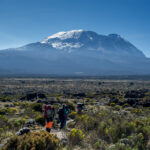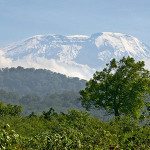 By Paul Shaffner, Iringa, Tanzania (flickr.com) [CC BY 2.0 (http://creativecommons.org/licenses/by/2.0)], via Wikimedia Commons
By Paul Shaffner, Iringa, Tanzania (flickr.com) [CC BY 2.0 (http://creativecommons.org/licenses/by/2.0)], via Wikimedia Commons
There are a lot of ways to measure a mountain’s prowess. Overall height is a common yardstick (and hopefully not determined BY a yardstick), as is technical difficulty, but there’s one measure all but the most mountain-obsessed may not have heard of: topographic prominence.
Topographic prominence is the height between the summit and the lowest contour line circling the mountain in question and no other higher mountain. So Everest, as the highest peak in the Himalayas, has a prominence equal to its total height: 8,848 meters (29,029 feet). But Lhotse, a mountain whose total height is a staggering 8,516 meters (27,940 feet), barely ranks on lists of mountain prominence, because the bulk of Lhotse’s height is also Everest’s height.

There are good reasons many climbers value a mountain’s prominence as much as its height. Listing mountains by prominence, instead of total elevation, helps avoid re-counting one mountain with several peaks. It also means the summit experience is likely to be more rewarding for the climber; views from the most prominent peak in the area are almost guaranteed to be better than those on a tall, but dependent, peak.
Prominence, and debates about its importance, explains why it’s hard to find a definitive list of the “tallest” mountains in the world.
There is, however, a fairly conclusive list of the most prominent mountains. By that measure Kilimanjaro is the fourth “highest” in the world! Only Everest, Aconcagua (South America’s entry for the Seven Summits) and Mount McKinley (North America’s for the same) rank higher.
For “peak baggers”—climbers that essentially “collect” summits on specific lists, or of a certain type—that makes Kilimanjaro an appealing mountain to climb.
Of course you don’t need to be a peak bagger to appreciate Kili’s spot on this exclusive list; just about anyone would be proud to say s/he climbed “the fourth most prominent mountain in the world!”






